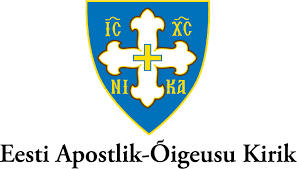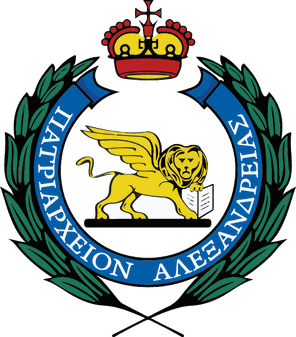Most Practiced faith in Greece
| Part of a series on |
| Christianity |
|---|
 |
|
Eastern Orthodoxy is by far the largest religious denomination in Greece.
| Part of a series on the |
| Eastern Orthodox Church |
|---|
| |
| Overview |
| Part of a series on |
| Christianity |
|---|
 |
Eastern Orthodoxy is by far the largest religious denomination in Greece.
The Greek Orthodox Church, a member of the Eastern Orthodox Communion, is described as the "prevailing religion" in Greece's constitution. Since 1850, Greek Orthodoxy within Greece is organized in the Church of Greece. Its members comprise between 95% [1] and 98% [2] of the population.
Within Greece, the Greek Orthodox Church is organized into 81 dioceses. While the majority is part of the Church of Greece constituting the autocephalous church of Greece, the dioceses of Crete and the Dodecanese, and Mount Athos are under the direct jurisdiction of the Patriarchate of Constantinople. Yet another 30 dioceses in northern Greece and the major islands in the north and northeast Aegean are nominally under the jurisdiction of the Ecumenical Patriarchate of Constantinople, while being administered "in stewardship" as part of the Church of Greece.
Apart from these, various Greek Old Calendarist jurisdictions exist that are not in communion with the Eastern Orthodox Churches under the jurisdiction of the Ecumenical Patriarchate of Constantinople.

The Eastern Orthodox Church, officially the Orthodox Catholic Church, and also called the Greek Orthodox Church or simply the Orthodox Church, is the second-largest Christian church, with approximately 220 million baptised members. It operates as a communion of autocephalous churches, each governed by its bishops via local synods. The church has no central doctrinal or governmental authority analogous to the head of the Catholic Church. Nevertheless, the Ecumenical Patriarch of Constantinople is recognised by them as primus inter pares, a title formerly given to the patriarch of Rome. As one of the oldest surviving religious institutions in the world, the Eastern Orthodox Church has played an especially prominent role in the history and culture of Eastern and Southeastern Europe.
The Eastern Orthodox Church, officially the Orthodox Catholic Church and commonly known simply as the Orthodox Church is a communion composed of up to seventeen separate autocephalous (self-governing) hierarchical churches that profess Eastern Orthodoxy and recognise each other as canonical (regular) Eastern Orthodox Christian churches.

The ecumenical patriarch is the archbishop of Constantinople (Istanbul) and New Rome, and primus inter pares among the heads of the several autocephalous churches which compose the Eastern Orthodox Church. The ecumenical patriarch is regarded as the representative and spiritual leader of the Eastern Orthodox Christians worldwide. The term ecumenical in the title is a historical reference to the Ecumene, a Greek designation for the civilised world, i.e. the Roman Empire, and it stems from Canon 28 of the Council of Chalcedon.

The Ecumenical Patriarchate of Constantinople is one of the fifteen to seventeen autocephalous churches that together compose the Eastern Orthodox Church. It is headed by the Ecumenical Patriarch of Constantinople.
Greek Orthodox Church is a Christian term that can refer to any one of three classes of church, each associated in some way with Greek Christianity or the Eastern Roman Empire.
The Standing Conference of the Canonical Orthodox Bishops in the Americas (SCOBA) was an organization of bishops from Eastern Orthodox Christian jurisdictions in the Americas. It acted as a clearinghouse for educational, charitable, and missionary work in the Americas. In 2010, it was replaced by the Assembly of Canonical Orthodox Bishops of North and Central America.

Russian Orthodoxy is the body of several churches within the larger communion of Eastern Orthodox Christianity, whose liturgy is or was traditionally conducted in Church Slavonic language. Most Churches of the Russian Orthodox tradition are part of the Eastern Orthodox Church.

The Estonian Apostolic Orthodox Church is an Orthodox church in Estonia under the direct jurisdiction of the Ecumenical Patriarch of Constantinople. Under Estonian law it is the legal successor to the pre–World War II Estonian Orthodox Church, which in 1940 had over 210,000 faithful, three bishops, 156 parishes, 131 priests, 19 deacons, two monasteries, and a theological seminary; the majority of the faithful were ethnic Estonians. Its official name is the Orthodox Church of Estonia.

The Greek OrthodoxPatriarchate of Alexandria and all Africa, also known as the Greek Orthodox Church of Alexandria, is an autocephalous patriarchate that is part of the Eastern Orthodox Church. Its seat is in Alexandria and it has canonical responsibility for the entire African continent.
The history of the Eastern Orthodox Church is the formation, events, and transformation of the Eastern Orthodox Church through time. According to the Eastern Orthodox tradition, the history of the Eastern Orthodox Church is traced back to Jesus Christ and the Apostles. The Apostles appointed successors, known as bishops, and they in turn appointed other bishops in a process known as Apostolic succession. Over time, five Patriarchates were established to organize the Christian world, and four of these ancient patriarchates remain Orthodox today. Orthodox Christianity reached its present form in late antiquity, when the ecumenical councils were held, doctrinal disputes were resolved, the Fathers of the Church lived and wrote, and Orthodox worship practices settled into their permanent form.
Eastern Orthodoxy in North America represents adherents, religious communities, institutions and organizations of Eastern Orthodox Christianity in North America, including the United States, Canada, Mexico, Central America, and the Caribbean. Estimates of the number of Eastern Orthodox adherents in North America vary considerably depending on methodology and generally fall in range from 3 million to 6 million.
The timeline of Eastern Orthodoxy in North America represents a timeline of the historical development of religious communities, institutions and organizations of Eastern Orthodox Christianity in North America.
The Ecumenical Patriarchate in America comprises nine separate jurisdictions, along with a number of stavropegial institutions, and includes roughly two-thirds of all Eastern Orthodox Christians in America. The archbishop of the Greek Orthodox Archdiocese of America, by far the largest of Constantinopolitan jurisdictions in the US, is considered the local primate and may convene a Holy Synod of all the hierarchs of the Ecumenical throne in America.

The Estonian Orthodox Church of the Moscow Patriarchate is a semi-autonomous church in the canonical jurisdiction of the Patriarchate of Moscow whose primate is appointed by the Holy Synod of the latter.

The Metropolis of Korea is an Eastern Orthodox diocese under the jurisdiction of the Ecumenical Patriarchate of Constantinople in Korea.
Eastern Orthodoxy in the Philippines, also known collectively as the Philippine Orthodox Church, refers to the Eastern Orthodox presence in the Philippines as a whole.

In AD 1453, the city of Constantinople, the capital and last stronghold of the Byzantine Empire, fell to the Ottoman Empire. By this time Egypt had been under Muslim control for some seven centuries. Jerusalem had been conquered by the Rashidun Caliphate Muslims in 638, won back by Rome in 1099 under the First Crusade and then reconquered by Saladin's forces during the siege of Jerusalem in 1187. Later in the seventh Crusade, it was taken back by the Catholics once again. It was conquered by the Ottomans in 1517. Orthodoxy, however, was very strong in Russia which had recently acquired an autocephalous status; and thus Moscow called itself the Third Rome, as the cultural heir of Constantinople. Under Ottoman rule, the Greek Orthodox Church acquired power as an autonomous millet. The ecumenical patriarch was the religious and administrative ruler of the entire "Greek Orthodox nation", which encompassed all the Eastern Orthodox subjects of the Empire.
Eastern Orthodoxy in Estonia is practiced by 16.5% of the population, making it the most identified religion and Christian denomination in this majority-secular state after surpassing Lutheran Christianity with 9.1% for first time in country's modern history. Eastern Orthodoxy, or more specifically Eastern Orthodox Christianity, is mostly practiced within Estonia's Russian ethnic minority and minority within native population. According to the 2000 Estonian census, 72.9% of those who identified as Orthodox Christians were of Russian descent.
This is a timeline of the presence of Eastern Orthodoxy in Greece from 1821 to 1924. The history of Greece traditionally encompasses the study of the Greek people, the areas they ruled historically, as well as the territory now composing the modern state of Greece.

In 1996 a schism between Moscow and Constantinople occurred; this schism began on 23 February 1996, when the Russian Orthodox Church severed full communion with the Ecumenical Patriarchate of Constantinople, and ended on 16 May 1996 when the Russian Orthodox Church and the Ecumenical Patriarchate reached an agreement.